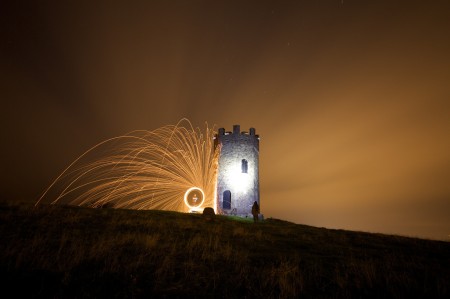I failed to mention in my last post, that the shoot was actually a team effort. You’ll be glad to know I didn’t take on the mutant cows alone. I was accompanied by my two friends and fellow photography enthusiasts, Craig and Dave. Having never done any night time shoots with fellow photographers, I wasn’t sure what to expect, but ideas were bouncing around all over the place. It really was a creative and productive evening. If you haven’t gone shooting with photo friends, I’d recommend it!
But the main point of this post is my little friend, <insert photo editing software name here> for some post production tweaks.
I’m not usually one for playing to much with my photographs after I’ve taken them, straightening a horizon or cloning out a dust spot here or there, but I seem to have little time to edit the photos. I try my best to get everything as close to perfect in camera. There are times though when you’re able to fiddle with your photos to improve them, and in many cases that I’ve seen, make them look terrible.
You may recognise this location from my previous post, but this photo is a composite of two different photos taken on that same night, neither of which were particularly pleasing by themselves. The 1st photo had the wire wool spin to the side, the great streaks from the clouds slithering across the sky while the tower wasn’t dark enough to be a silhouette, but wasn’t light enough to show off any detail. I was disappointed, until I saw the second photo, an illuminated tower, human silhouette and a flat, uninspiring sky. Enter photo editing application #1. I was able to combine the two photos with some fairly basic skills to make something that I’m really pleased with that’s had pride of place as my laptop’s wallpaper for some time.
Here’s to friends, be they software, human, or other.




 Posted by dwoosnam
Posted by dwoosnam 
